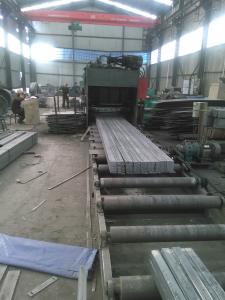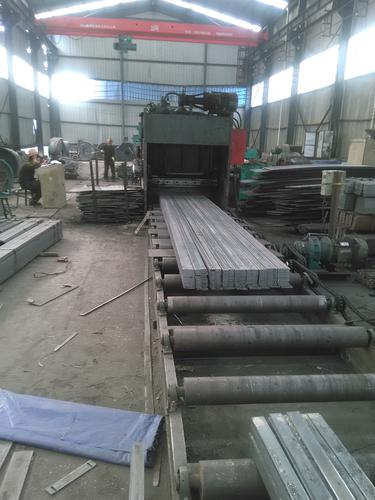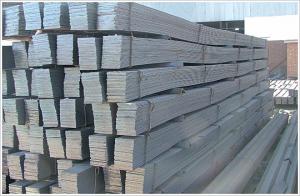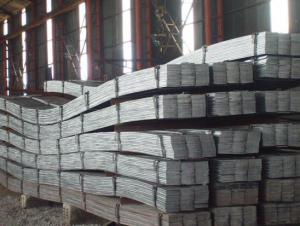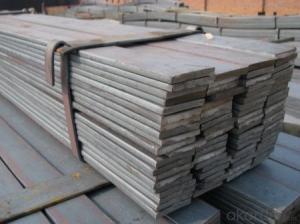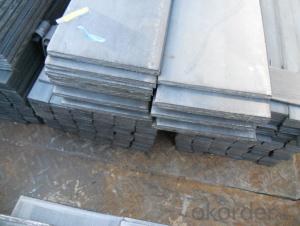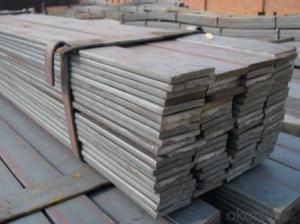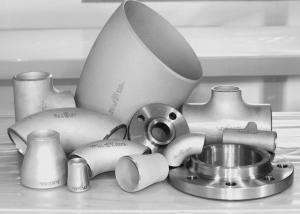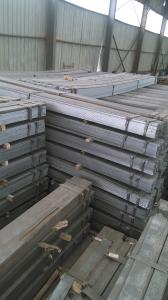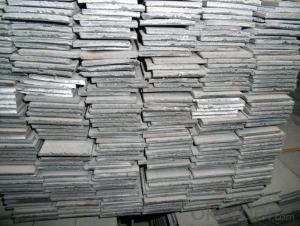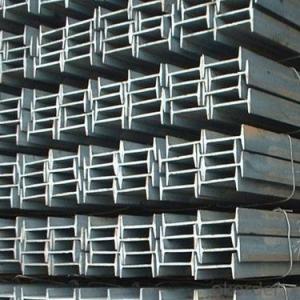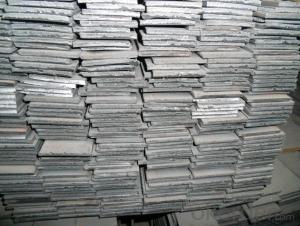Prime Low Carbon Alloy Flat Steel Bars Slitted
- Loading Port:
- Tianjin
- Payment Terms:
- TT or LC
- Min Order Qty:
- 50 m.t.
- Supply Capability:
- 10000T m.t./month
OKorder Service Pledge
OKorder Financial Service
You Might Also Like
Product Description:
OKorder is offering Prime Low Carbon Alloy Flat Steel Bars Slitted at great prices with worldwide shipping. Our supplier is a world-class manufacturer of steel, with our products utilized the world over. OKorder annually supplies products to African, South American and Asian markets. We provide quotations within 24 hours of receiving an inquiry and guarantee competitive prices.
Product Applications:
Prime Low Carbon Alloy Flat Steel Bars Slitted are ideal for structural applications and are widely used in the construction of buildings and bridges, and the manufacturing, petrochemical, and transportation industries.
Product Advantages:
OKorder's Prime Low Carbon Alloy Flat Steel Bars Slitted are durable, strong, and wide variety of sizes.
Main Product Features:
· Premium quality
· Prompt delivery & seaworthy packing (30 days after receiving deposit)
· Can be recycled and reused
· Mill test certification
· Professional Service
· Competitive pricing
Product Specifications:
Manufacture: slited
Slitting precision (width) : 0.5 mm or less
Raw material: Q235B, Q345B, Q235-1 b
crosscutting precision (length) : 2 mm or less
Processing: the thickness of 2.0-16 mm;
Shear length: 2000 mm above
Wide degree: 15-1250 - mm;
Leveling precision: 1-2 MM square
Packaging: Export packing, nude packing, bundled
FAQ:
Q1: Why buy Materials & Equipment from OKorder.com?
A1: All products offered byOKorder.com are carefully selected from China's most reliable manufacturing enterprises. Through its ISO certifications, OKorder.com adheres to the highest standards and a commitment to supply chain safety and customer satisfaction.
Q2: what is the difference between actual weight and theoretical weight?
A2: All the section steel has two weights: actual weight and theoretical weight. Actual weight is the weighing out when the product delivered from the mill. Theoretical weight is calculated by pieces. The invoice can be based on each of them as your request.
Q3: what is the difference between actual weight and theoretical weight?
A3: All the section steel has two weights: actual weight and theoretical weight. Actual weight is the weighing out when the product delivered from the mill. Theoretical weight is calculated by pieces. The invoice can be based on each of them as your request.
Images:

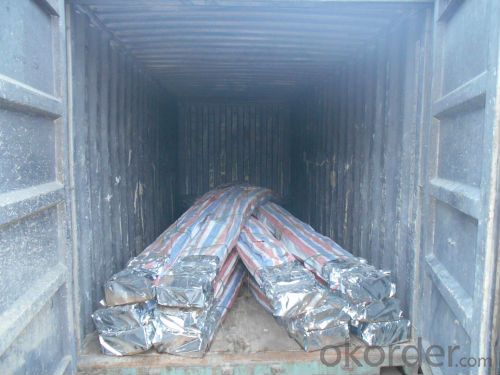
- Q: What are the different tolerance levels for steel flat bars?
- The tolerance levels for steel flat bars can vary depending on the specific requirements and standards set by the industry. Generally, the tolerance levels for steel flat bars can range from tight tolerances, where the dimensions must be extremely precise, to standard tolerances, where a small degree of variation is acceptable. It is important to consult the relevant standards or specifications to determine the exact tolerance levels for a particular application.
- Q: What are the safety precautions when working with steel flat bars?
- When working with steel flat bars, it is important to take certain safety precautions to minimize the risk of accidents or injuries. Some of the key safety measures include wearing personal protective equipment (PPE) such as safety glasses, gloves, and steel-toed boots to protect against potential hazards. Additionally, using appropriate lifting techniques or mechanical aids to handle heavy or large steel flat bars can prevent strain or back injuries. It is also crucial to ensure a well-ventilated work area to minimize exposure to fumes or dust generated during cutting, grinding, or welding processes. Regularly inspecting the flat bars for any defects or damage and properly securing them during transportation or storage is another important safety practice. Overall, following these safety precautions helps ensure a safer working environment when dealing with steel flat bars.
- Q: How do steel flat bars contribute to the energy efficiency of buildings?
- Steel flat bars can contribute to the energy efficiency of buildings in several ways. Firstly, steel is a highly durable material that can withstand extreme weather conditions, such as high winds and heavy rain, which can help in maintaining the structural integrity of the building over time. This durability leads to a longer lifespan for the building, reducing the need for frequent repairs or replacements, resulting in energy and cost savings. Additionally, steel flat bars are often used in the construction of windows and doors. These components play a crucial role in the energy efficiency of a building as they help to minimize heat transfer and air leakage. Steel, being a poor conductor of heat, can provide excellent insulation properties when used in window frames or door frames. This insulation helps to prevent heat loss during cold winter months and heat gain during hot summer months, reducing the reliance on heating or cooling systems and improving energy efficiency. Furthermore, steel flat bars can be used as structural elements in the building's envelope, such as in wall framing or roof trusses. The use of steel in these applications allows for the construction of lighter and stronger structures, which can facilitate the use of larger windows or open floor plans. This, in turn, promotes natural daylighting and ventilation, reducing the need for artificial lighting and mechanical ventilation systems. By maximizing the use of natural resources, steel flat bars contribute to the overall energy efficiency of the building. Lastly, steel is a recyclable material, meaning that after its use in a building, it can be easily recycled and repurposed for other applications. This promotes sustainable construction practices and reduces the overall environmental impact of the building industry. By choosing steel flat bars for construction, builders contribute to a circular economy, where materials are reused rather than disposed of, further enhancing the energy efficiency and sustainability of the building. In conclusion, steel flat bars contribute to the energy efficiency of buildings through their durability, insulation properties, structural benefits, and recyclability. By utilizing steel in various building components, builders can create more sustainable and energy-efficient structures, leading to long-term cost savings and reduced environmental impact.
- Q: How can copper cables and flat steel be welded together?
- The copper cable is pressed into the nose. It is punched through the steel and screwed,The national standard atlas is connected with a total equipotential terminal box.
- Q: What are the dimensions of a typical steel flat bar?
- The dimensions of a typical steel flat bar can vary depending on the specific application and industry standards. However, common dimensions for a steel flat bar include a width ranging from 0.125 inches (3.18 mm) to 12 inches (304.8 mm) and a thickness ranging from 0.125 inches (3.18 mm) to 4 inches (101.6 mm). The length of a steel flat bar typically ranges from 12 feet (3.66 meters) to 20 feet (6.1 meters), but it can also be customized to meet specific project requirements. It is important to note that these dimensions are not fixed and may vary depending on the manufacturer and the specific grade of steel being used.
- Q: Can steel flat bars be used as structural support in buildings?
- Yes, steel flat bars can be used as structural support in buildings. Steel is known for its strength and durability, making it a popular choice for structural applications. Flat bars can be used to provide support and stability in various building elements such as beams, columns, and frames. Additionally, steel flat bars can be easily fabricated and customized to meet specific design requirements, further enhancing their suitability for structural support in buildings.
- Q: Are steel flat bars suitable for making HVAC components?
- Indeed, steel flat bars prove to be fitting for the creation of HVAC components. Steel, a sturdy and resilient substance, possesses the ability to endure elevated temperatures and pressure, rendering it an optimal choice for employment in heating, ventilation, and air conditioning systems. Through straightforward manipulation, steel flat bars can be transformed into an assortment of components, including brackets, supports, frames, and ductwork, tailored to satisfy the specific prerequisites of HVAC systems. Moreover, steel boasts remarkable resistance to corrosion, a crucial attribute in safeguarding against harm and protracting the lifespan of HVAC components. In summary, steel flat bars stand as a dependable and versatile option for the production of HVAC components.
- Q: Can steel flat bars be bent without breaking?
- Steel flat bars can indeed be bent without breaking. However, the ability of steel to withstand bending without breaking depends on several factors, including the thickness and grade of the steel, as well as the bending technique employed. Commonly, steel flat bars are bent using either cold bending or hot bending methods. Cold bending is typically employed for thin and malleable steel bars and is performed at room temperature. On the other hand, hot bending may be necessary for thicker or harder steel bars. This technique involves heating the steel to a high temperature and bending it while it is still hot. By carefully controlling the bending process and ensuring that the steel does not surpass its elastic limit, it becomes possible to bend steel flat bars without causing them to fracture.
- Q: What is the maximum thickness-to-width ratio for steel flat bars?
- The maximum thickness-to-width ratio for steel flat bars depends on various factors such as the specific steel grade, manufacturing processes, and industry standards. However, in general, a typical maximum thickness-to-width ratio for steel flat bars is around 1:10.
- Q: Can steel flat bars be used for making marine equipment or structures?
- Steel flat bars are suitable for the construction of marine equipment or structures. Steel is frequently utilized in the marine industry because of its exceptional strength, long-lasting nature, and ability to withstand corrosion. Steel flat bars, specifically, are commonly employed in the fabrication of various marine equipment and structures, including ship hulls, boat frames, piers, docks, and offshore platforms. The flat shape of these bars enables effortless fabrication and welding, rendering them appropriate for a wide array of marine applications. Moreover, to enhance their resistance against saltwater corrosion, steel flat bars can be galvanized or coated with protective coatings, making them an ideal choice for marine environments.
Send your message to us
Prime Low Carbon Alloy Flat Steel Bars Slitted
- Loading Port:
- Tianjin
- Payment Terms:
- TT or LC
- Min Order Qty:
- 50 m.t.
- Supply Capability:
- 10000T m.t./month
OKorder Service Pledge
OKorder Financial Service
Similar products
Hot products
Hot Searches
Related keywords
